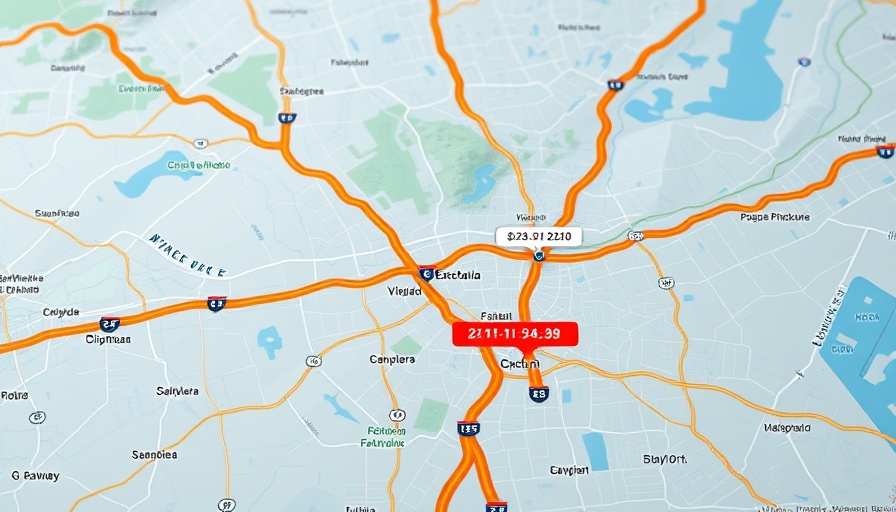
The Hidden Costs of Supercommuting: More Than Just Gas
As gas prices fluctuate and living costs rise, more individuals are choosing to supercommute, defined as being on the road for 90 minutes or longer. The lure of lower rents in suburban or rural areas is strong, yet many overlook the toll that long commutes can take on their finances and well-being. According to the U.S. Census Bureau, the number of supercommuters has grown to 5 million—a significant increase from 3.42 million in 2012. As we explore the full costs associated with supercommuting, it's important to understand that the financial implications extend far beyond just purchasing fuel.
Understanding the Real Expenses Associated with Long Commutes
The immediate, noticeable expense linked with supercommuting is undoubtedly gas. However, financial wisdom dictates that it's wise to delve deeper into ancillary costs, which can accumulate rapidly. These include wear and tear on vehicles—ranging from maintenance costs to depreciation. In fact, a report from AAA estimates that the average cost of vehicle ownership is about $0.61 per mile driven, which transforms each commute into a significant financial commitment.
Furthermore, spending excessive time on the road equates to less time spent engaging in productive activities, whether that be work, family bonding, or personal care. This can lead to missed opportunities in life, ultimately raising the emotional and psychological cost of commuting. For many, the strain on one’s mental health can be as burdensome as the financial impacts.
The Family Dynamics: A Steeper Price
The emotional toll of supercommuting may not just be personal. For families, long commutes can strain relationships and create tension within the household. Parents may find themselves physically present but emotionally drained, leading to a decline in the quality of family time. The narrative shared by one supercommuter exemplifies this: after spending hours each week commuting, short family trips can turn into logistical nightmares, as kids often need bathroom breaks at the most inconvenient moments.
Additionally, family commitment responsibilities can clash with long commute times that leave less room for spontaneity or quality interactions, leading to a diminished family experience overall.
A Broader Economic Perspective on Supercommuting
The trend towards supercommuting also reflects broader economic implications, especially within the context of urban planning and infrastructure development. As more individuals seek affordable housing in distant suburbs, local governments may need to reconsider transportation efficiencies. Areas known for supercommuting trends, such as certain regions in Central Ohio, must evaluate how this impacts overall community dynamics and economic growth potential.
Moreover, companies might need to adapt their work policies to contend with the reality of supercommuting. Flexible work-from-home options or hybrid models could cater to employees’ needs, fostering loyalty and potentially improving productivity in the long run.
Opportunity Costs: What Are You Sacrificing?
Time is one of the most valuable resources individuals can leverage. Supercommuting often results in the loss of hours that could otherwise be directed toward personal development or leisure pursuits. Financial advisers frequently advise clients to weigh the tangible benefits of earned income against the potential opportunity costs of long commutes. This can lead to deeper introspection about lifestyle choices and personal priorities.
For instance, if a supercommuter spends roughly 10 hours a week driving, what could they achieve with that additional time? Pursuing hobbies, launching side businesses, or spending quality time with family can all have life-changing implications.
Finding Balance: The Search for Work-Life Equilibrium
As the supercommuting trend grows, it's critical to seek solutions that maintain balance. Flexibility could be the key. By reevaluating workplace policies and encouraging telecommuting, both individuals and companies can strike a healthier work-life balance. Investing in solutions such as carpooling or utilizing public transport when possible can also lessen both the economic and emotional burdens.
Ultimately, understanding and navigating the hidden costs associated with supercommuting requires a thoughtful approach to both finances and personal well-being. By questioning whether the potential savings on housing are worth the far-reaching consequences, individuals can make more informed decisions about their living situations and commute patterns.
Take Charge of Your Finances: Evaluate Your Commute
It’s time to evaluate not just where you live, but how the decisions surrounding your commute are affecting your overall quality of life. Weigh the costs and benefits, and consider how this impacts your family dynamics, personal time, and mental health. Discover more about how making informed decisions can improve your financial standing by exploring practical solutions that align with your lifestyle.
 Add Row
Add Row  Add
Add 




 Add Row
Add Row  Add
Add 

Write A Comment